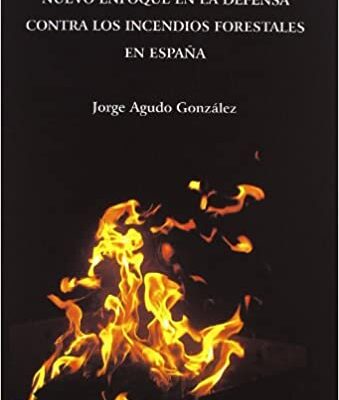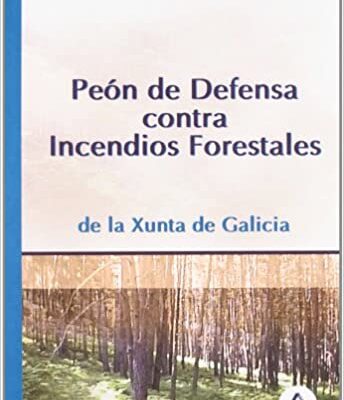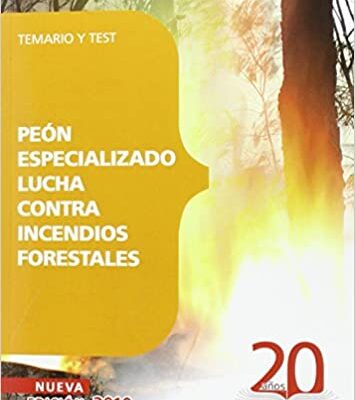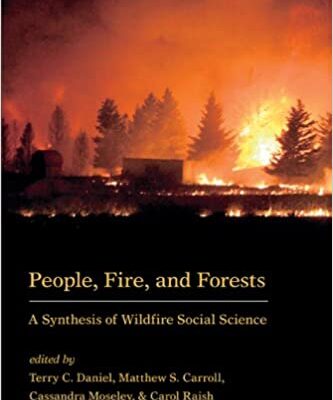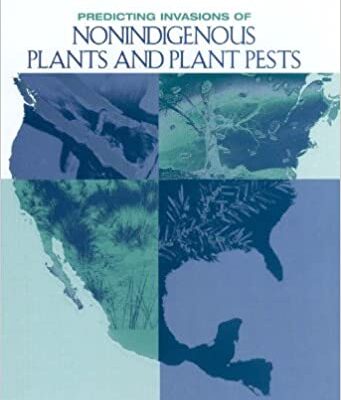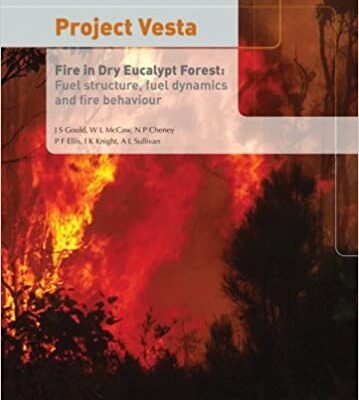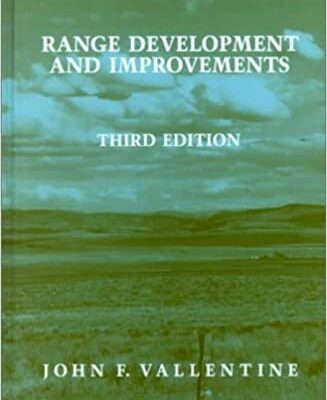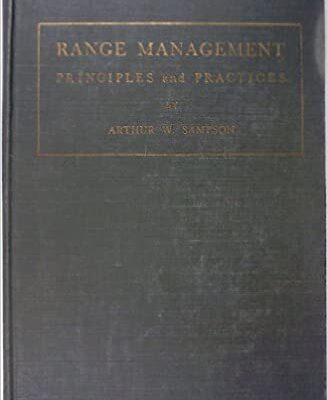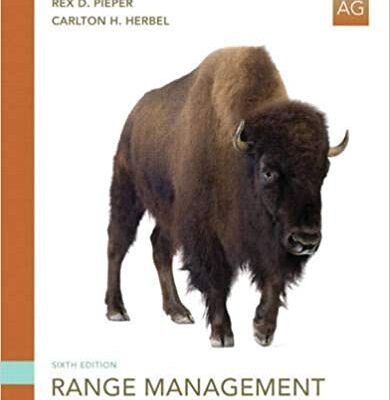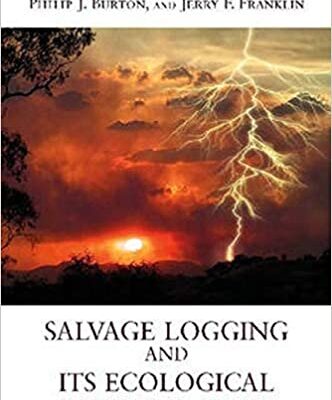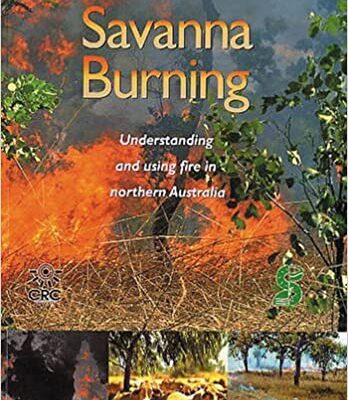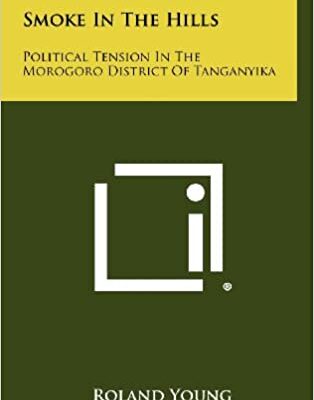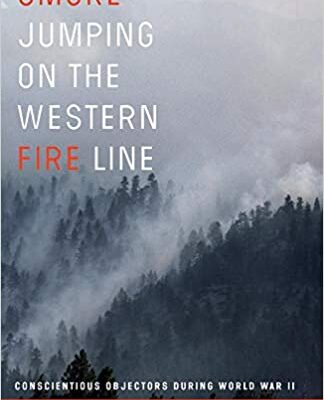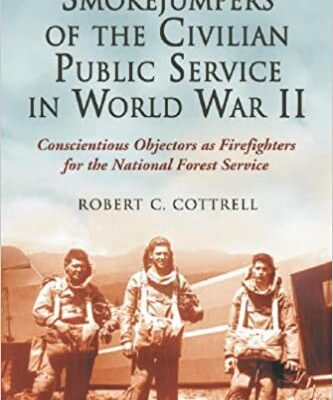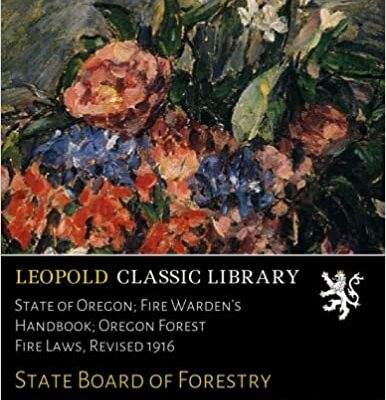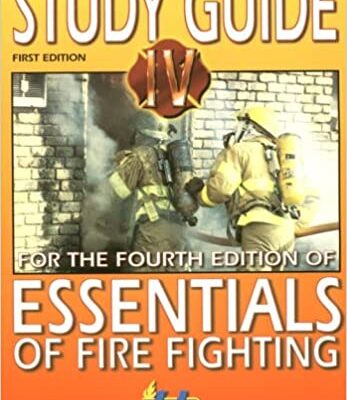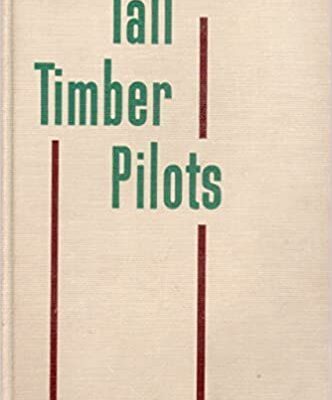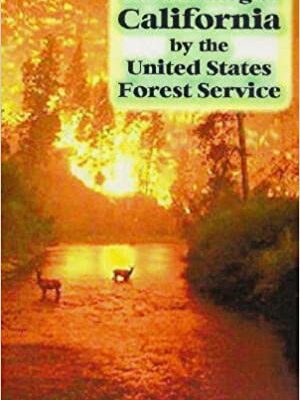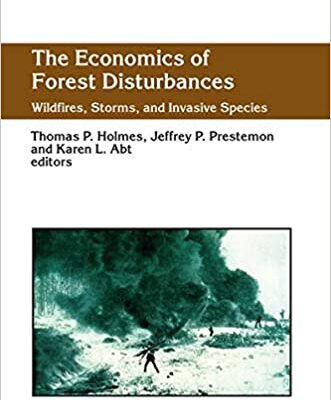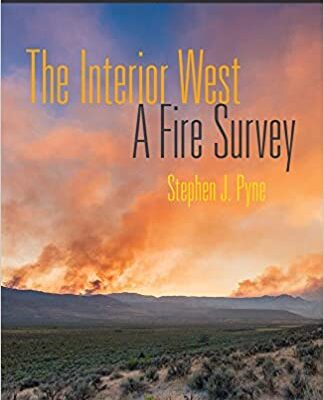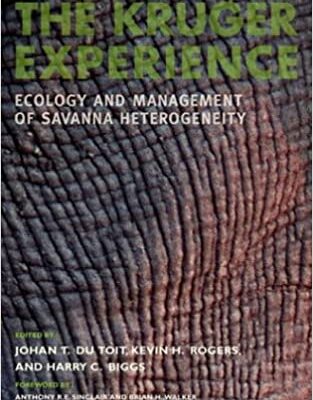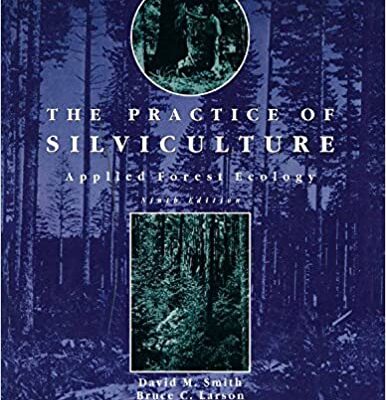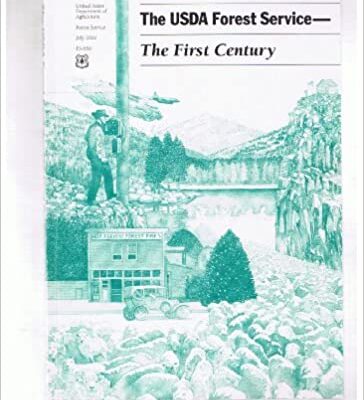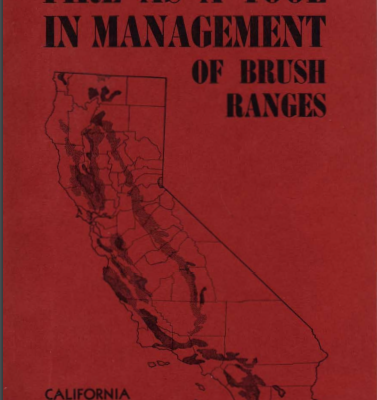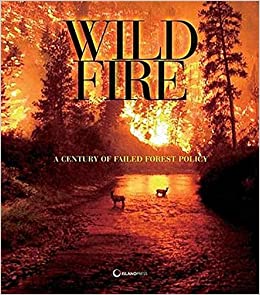Nuevo enfoque en la defensa contra los incendios forestales en España (Spanish Edition)
1st Edition
Spanish Edition by Jorge Agudo González(Author)
España es uno de los países del ámbito mediterráneo que registra mayor número de incendios forestales y superficie afectada. Además, las competencias relativas a prevención, detección y extinción de los incendios forestales corresponden a las Comunidades Autónomas, por lo que existe un profuso y diverso desarrollo de instrumentos jurídicos y políticos que permite reconocer diferentes modelos autonómicos de gestión de los incendios forestales en el Estado de las Autonomías. En consecuencia, el caso de estudio español es, junto con el italiano, uno de los que reviste mayor complejidad e interés en Europa. En consecuencia, el trabajo que ahora se publica es fruto de una larga e intensa investigación, que forma parte del proceso de desarrollo de un proyecto europeo único en la materia y que aborda uno de los casos de gestión de incendios forestales más destacados y complejos en Europa. El profesor Agudo elige para ello un enfoque integrador y territorial que se aleja del clásico planteamiento sectorial desde el que se ha venido legislando y planificando la defensa contra incendios forestales en los países europeos. ----------------------------------------------------------------------- D. Jorge Agudo González, Profesor Titular de Derecho Administrativo en la Universidad Autónoma de Madrid.
1st Edition
Spanish Edition by Jorge Agudo González(Author)
España es uno de los países del ámbito mediterráneo que registra mayor número de incendios forestales y superficie afectada. Además, las competencias relativas a prevención, detección y extinción de los incendios forestales corresponden a las Comunidades Autónomas, por lo que existe un profuso y diverso desarrollo de instrumentos jurídicos y políticos que permite reconocer diferentes modelos autonómicos de gestión de los incendios forestales en el Estado de las Autonomías. En consecuencia, el caso de estudio español es, junto con el italiano, uno de los que reviste mayor complejidad e interés en Europa. En consecuencia, el trabajo que ahora se publica es fruto de una larga e intensa investigación, que forma parte del proceso de desarrollo de un proyecto europeo único en la materia y que aborda uno de los casos de gestión de incendios forestales más destacados y complejos en Europa. El profesor Agudo elige para ello un enfoque integrador y territorial que se aleja del clásico planteamiento sectorial desde el que se ha venido legislando y planificando la defensa contra incendios forestales en los países europeos. ----------------------------------------------------------------------- D. Jorge Agudo González, Profesor Titular de Derecho Administrativo en la Universidad Autónoma de Madrid.
Open Space: The Choices Before California; The Urban Metropolitan Open Space Study
Paperback – January 1, 1969
by Edward A Williams(Author)
Paperback – January 1, 1969
by Edward A Williams(Author)
Operation Pet Rescue: Animal Survivors of the Oakland, California, Firestorm
Hardcover – October 1, 1994
by Gregory N. Zompolis(Author)
Hardcover – October 1, 1994
by Gregory N. Zompolis(Author)
Peon de defensa contra incendios forestales. Temario y test. Xunta de galicia. (Spanish Edition)
Paperback – January 24, 2003
Paperback – January 24, 2003
Peón Especializado Lucha contra Incendios Forestales. Temario y Test (Colección 55)
(Spanish Edition) Paperback – June 23, 2010
Spanish Edition by Sin datos (Author)
El presente manual es un temario de carácter general en el que se contiene una selección de materias cuyo conocimiento se exige a los aspirantes a ingresar en los Cuerpos de Peones Especializados en la lucha contra Incendios Forestales al servicio de las
(Spanish Edition) Paperback – June 23, 2010
Spanish Edition by Sin datos (Author)
El presente manual es un temario de carácter general en el que se contiene una selección de materias cuyo conocimiento se exige a los aspirantes a ingresar en los Cuerpos de Peones Especializados en la lucha contra Incendios Forestales al servicio de las
People, Fire, and Forests: A Synthesis of Wildfire Social Science
by Terry C. Daniel(Author)
About the Author
by Terry C. Daniel(Author)
About the Author
Portable Flame Thrower M2-2: TM 3-376A
Paperback – October 1, 2013
by War Department (Author)
The M2-2 flamethrower was an American portable backpack incendiary device that was used in World War II. It was the successor to the M1 and M1A1 flamethrowers and offered improved reliability and a more efficient ignition system than previous models. It had a "burn time" of around seven seconds and the flame was effective out to around thirty-three meters. In 1944, the M2-2 flamethrower was introduced into service. It was first used in combat in Guam and was thereafter employed in all Pacific campaigns. Flamethrowers proved highly effective in fighting against the Japanese, especially in routing defenders from caves, pillboxes and underground emplacements.The arrival of flamethrowing tanks, which offered personnel protection and more firepower, lessened the Army's interest in and tactical use of portable flamethrowers. The M2 was upgraded for use during the Korean War (M2A1-2) and Vietnam War (M2A1-7), and eventually replaced by the lightweight M9A1-7. However, these were shelved after 1978 when the Department of Defense unilaterally stopped using flamethrowers on the grounds that they are inhumane and have little combat value.Created in 1944, this field manual reveals a great deal about the M2-2’s design and capabilities. Intended as a training manual for those charged withoperation and maintenance, it details many aspects of its controls, tools andaccessories. Originally labeled restricted, this manual was declassified long ago and is here reprinted in book form. Care has been taken to preserve the integrity of the text.
Paperback – October 1, 2013
by War Department (Author)
The M2-2 flamethrower was an American portable backpack incendiary device that was used in World War II. It was the successor to the M1 and M1A1 flamethrowers and offered improved reliability and a more efficient ignition system than previous models. It had a "burn time" of around seven seconds and the flame was effective out to around thirty-three meters. In 1944, the M2-2 flamethrower was introduced into service. It was first used in combat in Guam and was thereafter employed in all Pacific campaigns. Flamethrowers proved highly effective in fighting against the Japanese, especially in routing defenders from caves, pillboxes and underground emplacements.The arrival of flamethrowing tanks, which offered personnel protection and more firepower, lessened the Army's interest in and tactical use of portable flamethrowers. The M2 was upgraded for use during the Korean War (M2A1-2) and Vietnam War (M2A1-7), and eventually replaced by the lightweight M9A1-7. However, these were shelved after 1978 when the Department of Defense unilaterally stopped using flamethrowers on the grounds that they are inhumane and have little combat value.Created in 1944, this field manual reveals a great deal about the M2-2’s design and capabilities. Intended as a training manual for those charged withoperation and maintenance, it details many aspects of its controls, tools andaccessories. Originally labeled restricted, this manual was declassified long ago and is here reprinted in book form. Care has been taken to preserve the integrity of the text.
Predicting Invasions of Nonindigenous Plants and Plant Pests
Principles of Ecosystem Stewardship: Resilience-Based Natural Resource Management in a Changing World
2009th Edition
by F Stuart Chapin III(Editor), Gary P. Kofinas(Editor), Carl Folke(Editor), M.C. Chapin(Illustrator)
The world is undergoing unprecedented changes in many of the factors that determine its fundamental properties and their in- ence on society. These changes include climate; the chemical c- position of the atmosphere; the demands of a growing human population for food and ?ber; and the mobility of organisms, ind- trial products, cultural perspectives, and information ?ows. The magnitude and widespread nature of these changes pose serious challenges in managing the ecosystem services on which society depends. Moreover, many of these changes are strongly in?uenced by human activities, so future patterns of change will continue to be in?uenced by society’s choices and governance. The purpose of this book is to provide a new framework for n- ural resource management―a framework based on stewardship of ecosystems for human well-being in a world dominated by unc- tainty and change. The goal of ecosystem stewardship is to respond to and shape change in social-ecological systems in order to s- tain the supply and opportunities for use of ecosystem services by society. The book links recent advances in the theory of resilience, sustainability, and vulnerability with practical issues of ecosystem management and governance. The book is aimed at advanced undergraduates and beginning graduate students of natural resource management as well as professional managers, community leaders, and policy makers with backgrounds in a wide array of d- ciplines, including ecology, policy studies, economics, sociology, and anthropology
2009th Edition
by F Stuart Chapin III(Editor), Gary P. Kofinas(Editor), Carl Folke(Editor), M.C. Chapin(Illustrator)
The world is undergoing unprecedented changes in many of the factors that determine its fundamental properties and their in- ence on society. These changes include climate; the chemical c- position of the atmosphere; the demands of a growing human population for food and ?ber; and the mobility of organisms, ind- trial products, cultural perspectives, and information ?ows. The magnitude and widespread nature of these changes pose serious challenges in managing the ecosystem services on which society depends. Moreover, many of these changes are strongly in?uenced by human activities, so future patterns of change will continue to be in?uenced by society’s choices and governance. The purpose of this book is to provide a new framework for n- ural resource management―a framework based on stewardship of ecosystems for human well-being in a world dominated by unc- tainty and change. The goal of ecosystem stewardship is to respond to and shape change in social-ecological systems in order to s- tain the supply and opportunities for use of ecosystem services by society. The book links recent advances in the theory of resilience, sustainability, and vulnerability with practical issues of ecosystem management and governance. The book is aimed at advanced undergraduates and beginning graduate students of natural resource management as well as professional managers, community leaders, and policy makers with backgrounds in a wide array of d- ciplines, including ecology, policy studies, economics, sociology, and anthropology
Principles of Forest Policy
Textbook Binding – June 1, 1970
by Worrell, Albert Cadwallader,(Author)
Textbook Binding – June 1, 1970
by Worrell, Albert Cadwallader,(Author)
Project Vesta: Fire in Dry Eucalypt Forest: Fuel Structure, Fuel Dynamics and Fire Behaviour
Kindle Edition
by JS Gould (Author, Editor), WL McCaw (Author, Editor), NP Cheney (Author, Editor), PF Ellis (Author, Editor), IK Knight (Author, Editor), AL Sullivan (Author, Editor) Format: Kindle Edition
Project Vesta was a comprehensive research project to investigate the behaviour and spread of high-intensity bushfires in dry eucalypt forests with different fuel ages and understorey vegetation structures. The project was designed to quantify age-related changes in fuel attributes and fire behaviour in dry eucalypt forests typical of southern Australia. The four main scientific aims of Project Vesta were: To quantify the changes in the behaviour of fire in dry eucalypt forest as fuel develops with age (i.e. time since fire); To characterise wind speed profiles in forest with different overstorey and understorey vegetation structure in relation to fire behaviour; To develop new algorithms describing the relationship between fire spread and wind speed, and fire spread and fuel characteristics including load, structure and height; and to develop a National Fire Behaviour Prediction System for dry eucalypt forests.Kindle Edition
by JS Gould (Author, Editor), WL McCaw (Author, Editor), NP Cheney (Author, Editor), PF Ellis (Author, Editor), IK Knight (Author, Editor), AL Sullivan (Author, Editor) Format: Kindle Edition
Project Vesta was a comprehensive research project to investigate the behaviour and spread of high-intensity bushfires in dry eucalypt forests with different fuel ages and understorey vegetation structures. The project was designed to quantify age-related changes in fuel attributes and fire behaviour in dry eucalypt forests typical of southern Australia. The four main scientific aims of Project Vesta were: To quantify the changes in the behaviour of fire in dry eucalypt forest as fuel develops with age (i.e. time since fire); To characterise wind speed profiles in forest with different overstorey and understorey vegetation structure in relation to fire behaviour; To develop new algorithms describing the relationship between fire spread and wind speed, and fire spread and fuel characteristics including load, structure and height; and to develop a National Fire Behaviour Prediction System for dry eucalypt forests.Protecting Endangered Species in the United States: Biological Needs, Political Realities, Economic Choices
1st Edition
by Jason F. Shogren(Editor), John Tschirhart(Editor)
Protecting Endangered Species in the United States is a collection of original papers by economists, biologists and political scientists with a common theme--protecting species at risk while safeguarding social order is a policy challenge that entangles biology, politics, and economics. The volume begins by assessing the biological needs that define the endangered species problem. The authors then explore the political realities that delimit the debate--who pays the costs and receives the benefits, and how interest groups affect species protection. The book addresses the economic choices that must be confronted for effective protection strategies including incentive schemes to promote preservation on public and private land.
1st Edition
by Jason F. Shogren(Editor), John Tschirhart(Editor)
Protecting Endangered Species in the United States is a collection of original papers by economists, biologists and political scientists with a common theme--protecting species at risk while safeguarding social order is a policy challenge that entangles biology, politics, and economics. The volume begins by assessing the biological needs that define the endangered species problem. The authors then explore the political realities that delimit the debate--who pays the costs and receives the benefits, and how interest groups affect species protection. The book addresses the economic choices that must be confronted for effective protection strategies including incentive schemes to promote preservation on public and private land.
Pyrotechnics 2nd Edition
2nd Edition, Kindle Edition
by George Weingart(Author) Format: Kindle Edition
2nd Edition, Kindle Edition
by George Weingart(Author) Format: Kindle Edition
Range Development and Improvements, Third Edition
3rd Edition
by John F. Vallentine(Author)
FROM THE PREFACE: Many aspects of range development and improvement have been extensively researched in the United States and Canada since World War II. While this has resulted in a rather voluminous literature on this phase of range science, the data have remained widely scattered in various journals, bulletins, handbooks, and research reports. Although individual chapters in a limited number of textbooks have dealt with range improvements and closely related subjects, no known effort has previously been made to bring this information together under one cover. Range Development and Improvements has as its goal the survey of this scientific field, the selection of principles and results, and the organization of this information into a useful and readily accessible form. Dr. L. A. Stoddart and Dr. C. Wayne Cook, my former associates in the Department of Range Science, Utah State University, provided the original idea for the textbook on range improvements. My teaching courses in range improvements at Utah State University and Brigham Young University and associated extension and research in the Intermountain Region and in the Great Plains provided the impetus for developing this idea into an active plan. The basis of this book, however, is the written reports of many people in range science and related fields. The society for Range Management, through its 5500 members, has actively promoted the advancement of grazing land management including improvements. Additional professional organizations associated with weed science, ecology, agronomy, animal science, wildlife science, soil conservation, and farm and ranch management have also promoted certain aspects of range improvements. A unique interagency organization active in the field of range improvements is the Vegetative Rehabilitation and Equipment Workshop (formerly Range Seeding Equipment Committee). This committee was organized to evaluate and develop better equipment and methods for range seeding, weed and brush control, and related range improvements. In cooperation with private and governmental equipment-development centers, many important contributions have been made on range-improvement equipment. The membership of this committee has come principally from the public land managing agencies but also from various universities, research organizations, and commercial enterprises. In developing this textbook and reference manual, I have attempted to include both principles and practices. Principles have been emphasized since these are the basis of solving the varied problems found on rangeland and of achieving high levels of productivity. Rigid formulas lack sufficient flexibility for uniform applications. However, stepwise procedures recommended in certain instances have been included to exemplify the adaptation of principles to applied range improvement. Basic principles provided in this manual should allow its use over broad geographic areas. Regional aspects over the United States and adjacent areas in Canada and Mexico have been emphasized, however. Local aspects of range improvement have frequently been referred to as a means of making geographic association. Helpful comments and suggestions on the content and format of Range Development and Improvements were received from many reviewers. Many of the pictures and drawings used in the book were provided by various agencies, organizations, and individuals; acknowledgement is made in the respective figure captions. This work should continue to prove useful not only as a textbook but also as a reference manual for ranchers, range technicians, public land administrators, agribusiness personnel, educators, and students. Range improvement is a rapidly advancing phase of range management. Researchers in the state agricultural experiment stations, the Forest and Range Experiment Stations, the USDA-Agricultural Research Service, and various private research foundations are continually adding to information available in this field.
3rd Edition
by John F. Vallentine(Author)
FROM THE PREFACE: Many aspects of range development and improvement have been extensively researched in the United States and Canada since World War II. While this has resulted in a rather voluminous literature on this phase of range science, the data have remained widely scattered in various journals, bulletins, handbooks, and research reports. Although individual chapters in a limited number of textbooks have dealt with range improvements and closely related subjects, no known effort has previously been made to bring this information together under one cover. Range Development and Improvements has as its goal the survey of this scientific field, the selection of principles and results, and the organization of this information into a useful and readily accessible form. Dr. L. A. Stoddart and Dr. C. Wayne Cook, my former associates in the Department of Range Science, Utah State University, provided the original idea for the textbook on range improvements. My teaching courses in range improvements at Utah State University and Brigham Young University and associated extension and research in the Intermountain Region and in the Great Plains provided the impetus for developing this idea into an active plan. The basis of this book, however, is the written reports of many people in range science and related fields. The society for Range Management, through its 5500 members, has actively promoted the advancement of grazing land management including improvements. Additional professional organizations associated with weed science, ecology, agronomy, animal science, wildlife science, soil conservation, and farm and ranch management have also promoted certain aspects of range improvements. A unique interagency organization active in the field of range improvements is the Vegetative Rehabilitation and Equipment Workshop (formerly Range Seeding Equipment Committee). This committee was organized to evaluate and develop better equipment and methods for range seeding, weed and brush control, and related range improvements. In cooperation with private and governmental equipment-development centers, many important contributions have been made on range-improvement equipment. The membership of this committee has come principally from the public land managing agencies but also from various universities, research organizations, and commercial enterprises. In developing this textbook and reference manual, I have attempted to include both principles and practices. Principles have been emphasized since these are the basis of solving the varied problems found on rangeland and of achieving high levels of productivity. Rigid formulas lack sufficient flexibility for uniform applications. However, stepwise procedures recommended in certain instances have been included to exemplify the adaptation of principles to applied range improvement. Basic principles provided in this manual should allow its use over broad geographic areas. Regional aspects over the United States and adjacent areas in Canada and Mexico have been emphasized, however. Local aspects of range improvement have frequently been referred to as a means of making geographic association. Helpful comments and suggestions on the content and format of Range Development and Improvements were received from many reviewers. Many of the pictures and drawings used in the book were provided by various agencies, organizations, and individuals; acknowledgement is made in the respective figure captions. This work should continue to prove useful not only as a textbook but also as a reference manual for ranchers, range technicians, public land administrators, agribusiness personnel, educators, and students. Range improvement is a rapidly advancing phase of range management. Researchers in the state agricultural experiment stations, the Forest and Range Experiment Stations, the USDA-Agricultural Research Service, and various private research foundations are continually adding to information available in this field.
Range Management, Principles and Practices
Hardcover – January 1, 1952
Hardcover – January 1, 1952
Range Management: Principles and Practices
6th Edition
by Jerry Holechek (Author), Rex Pieper (Author), Carlton Herbel Deceased (Author)
This up-to-date, easy-to-read text brings together the key principles and practices of contemporary range management, presenting them in logical sequence as concisely and efficiently as possible. The authors introduce the fundamentals of range management using current and relevant scientific studies and practical examples, and illustrating key concepts with pictures, figures, and tables. Grazing management is emphasized, and several other aspects of range management are given comprehensive coverage. In particular, this edition has been updated with comprehensive information on highly relevant issues such as range animal behavior, economics, energy, and multiple use environments.
6th Edition
by Jerry Holechek (Author), Rex Pieper (Author), Carlton Herbel Deceased (Author)
This up-to-date, easy-to-read text brings together the key principles and practices of contemporary range management, presenting them in logical sequence as concisely and efficiently as possible. The authors introduce the fundamentals of range management using current and relevant scientific studies and practical examples, and illustrating key concepts with pictures, figures, and tables. Grazing management is emphasized, and several other aspects of range management are given comprehensive coverage. In particular, this edition has been updated with comprehensive information on highly relevant issues such as range animal behavior, economics, energy, and multiple use environments.
Salvage Logging and Its Ecological Consequences
2nd Edition
by David B. Lindenmayer(Author), Philip J. Burton(Author), Jerry F. Franklin(Author)
Salvage logging—removing trees from a forested area in the wake of a catastrophic event such as a wildfire or hurricane—is highly controversial. Policymakers and those with an economic interest in harvesting trees typically argue that damaged areas should be logged so as to avoid “wasting” resources, while many forest ecologists contend that removing trees following a disturbance is harmful to a variety of forest species and can interfere with the natural process of ecosystem recovery. Salvage Logging and Its Ecological Consequences brings together three leading experts on forest ecology to explore a wide range of issues surrounding the practice of salvage logging. They gather and synthesize the latest research and information about its economic and ecological costs and benefits, and consider the impacts of salvage logging on ecosystem processes and biodiversity. The book examines • what salvage logging is and why it is controversial • natural and human disturbance regimes in forested ecosystems • differences between salvage harvesting and traditional timber harvesting • scientifically documented ecological impacts of salvage operations • the importance of land management objectives in determining appropriate post-disturbance interventions Brief case studies from around the world highlight a variety of projects, including operations that have followed wildfires, storms, volcanic eruptions, and insect infestations. In the final chapter, the authors discuss policy management implications and offer prescriptions for mitigating the impacts of future salvage harvesting efforts. Salvage Logging and Its Ecological Consequences is a “must-read” volume for policymakers, students, academics, practitioners, and professionals involved in all aspects of forest management, natural resource planning, and forest conservation.
2nd Edition
by David B. Lindenmayer(Author), Philip J. Burton(Author), Jerry F. Franklin(Author)
Salvage logging—removing trees from a forested area in the wake of a catastrophic event such as a wildfire or hurricane—is highly controversial. Policymakers and those with an economic interest in harvesting trees typically argue that damaged areas should be logged so as to avoid “wasting” resources, while many forest ecologists contend that removing trees following a disturbance is harmful to a variety of forest species and can interfere with the natural process of ecosystem recovery. Salvage Logging and Its Ecological Consequences brings together three leading experts on forest ecology to explore a wide range of issues surrounding the practice of salvage logging. They gather and synthesize the latest research and information about its economic and ecological costs and benefits, and consider the impacts of salvage logging on ecosystem processes and biodiversity. The book examines • what salvage logging is and why it is controversial • natural and human disturbance regimes in forested ecosystems • differences between salvage harvesting and traditional timber harvesting • scientifically documented ecological impacts of salvage operations • the importance of land management objectives in determining appropriate post-disturbance interventions Brief case studies from around the world highlight a variety of projects, including operations that have followed wildfires, storms, volcanic eruptions, and insect infestations. In the final chapter, the authors discuss policy management implications and offer prescriptions for mitigating the impacts of future salvage harvesting efforts. Salvage Logging and Its Ecological Consequences is a “must-read” volume for policymakers, students, academics, practitioners, and professionals involved in all aspects of forest management, natural resource planning, and forest conservation.
Sasha Bezzubov
by António José Bento Gonçalves(Editor), António Avelino Batista Vieira(Editor), Maria Rosário Melo Costa(Editor), José Tadeu Marques Aranha(Editor)
The present book intends to outline different approaches regarding wildland fires, showing different perspectives and challenges present in the beginning of the 21st century and emerging in different case studies that reveal how wildfires are being faced in some countries around the world (Portugal, Spain, Brazil, Algeria, Mozambique, Lithuania and Chile). Therefore, this book includes fifteen valuable contributions that reflect its title: Wildfires: Perspectives, Issues and Challenges of the 21st Century. The first part of this book includes topics that expresses different realities and challenges on wildfire analysis in Europe, South America and Africa, in a total of six chapters. The second part of this book, entitled “New Perspectives and Methodologies on Wildfire Research”, which is composed of five chapters, is focused on the implementation of recent techniques and methodologies to promote wildfire knowledge and forest management. The last part is related to recent developments on soils and ashes analysis, and their off-site effects on water quality. It is composed of four chapters where these topics are discussed.
by António José Bento Gonçalves(Editor), António Avelino Batista Vieira(Editor), Maria Rosário Melo Costa(Editor), José Tadeu Marques Aranha(Editor)
The present book intends to outline different approaches regarding wildland fires, showing different perspectives and challenges present in the beginning of the 21st century and emerging in different case studies that reveal how wildfires are being faced in some countries around the world (Portugal, Spain, Brazil, Algeria, Mozambique, Lithuania and Chile). Therefore, this book includes fifteen valuable contributions that reflect its title: Wildfires: Perspectives, Issues and Challenges of the 21st Century. The first part of this book includes topics that expresses different realities and challenges on wildfire analysis in Europe, South America and Africa, in a total of six chapters. The second part of this book, entitled “New Perspectives and Methodologies on Wildfire Research”, which is composed of five chapters, is focused on the implementation of recent techniques and methodologies to promote wildfire knowledge and forest management. The last part is related to recent developments on soils and ashes analysis, and their off-site effects on water quality. It is composed of four chapters where these topics are discussed.
Savanna Burning: Understanding and Using Fire in Northern Australia
Paperback – January 1, 2001
Paperback – January 1, 2001
Smoke in the Hills: Political Tension in the Morogoro District of Tanganyika
Hardcover – June 23, 2012
by Roland Young(Author), Henry Fosbrooke(Author)
Northwestern University African Studies, Number 4.
Hardcover – June 23, 2012
by Roland Young(Author), Henry Fosbrooke(Author)
Northwestern University African Studies, Number 4.
Smoke Jumping on the Western Fire Line: Conscientious Objectors During World War II
Hardcover – Illustrated, August 21, 2006
by Mark Matthews(Author), George McGovern(Foreword)
Hardcover – Illustrated, August 21, 2006
by Mark Matthews(Author), George McGovern(Foreword)
Smokejumpers of the Civilian Public Service in World War II: Conscientious Objectors as Firefighters for the National Forest Service
Paperback – Illustrated, August 22, 2006
by Robert C Cottrell(Author)
This is the story of Civilian Public Service smokejumpers, who battled against dangerous winds, searing heat, and devastating fires from 1943 until 1945. Fewer than 300 World War II conscientious objectors served their country in this fashion, operating out of CPS bases in Montana, Idaho, and Oregon. But that small band of men helped to keep alive Forest Service operations in the Pacific Northwest and thus sustained a program to fight potentially crippling fires. When the war ended, CPS smokejumpers, like millions of World War II combat soldiers, were ushered out of wartime service. Some, like many returning GIs, encountered difficulties in adjusting to civilian life. Nevertheless, the one-time smokejumpers often went on to make other remarkable contributions to their communities, their nation, and the world.
Paperback – Illustrated, August 22, 2006
by Robert C Cottrell(Author)
This is the story of Civilian Public Service smokejumpers, who battled against dangerous winds, searing heat, and devastating fires from 1943 until 1945. Fewer than 300 World War II conscientious objectors served their country in this fashion, operating out of CPS bases in Montana, Idaho, and Oregon. But that small band of men helped to keep alive Forest Service operations in the Pacific Northwest and thus sustained a program to fight potentially crippling fires. When the war ended, CPS smokejumpers, like millions of World War II combat soldiers, were ushered out of wartime service. Some, like many returning GIs, encountered difficulties in adjusting to civilian life. Nevertheless, the one-time smokejumpers often went on to make other remarkable contributions to their communities, their nation, and the world.
Social Science and Natural Hazards.
Hardcover – January 1, 1980
by Peter H. (eds). WRIGHT, James D., and ROSSI(Author)
Hardcover – January 1, 1980
by Peter H. (eds). WRIGHT, James D., and ROSSI(Author)
State of Oregon; Fire Warden's Handbook; Oregon Forest Fire Laws, Revised 1916
Paperback – April 12, 2017
by State Board of Forestry(Author)
About us
Leopold Classic Library has the goal of making available to readers the classic books that have been out of print for decades. While these books may have occasional imperfections, we consider that only hand checking of every page ensures readable content without poor picture quality, blurred or missing text etc. That's why we:- republish only hand checked books;
- that are high quality;
- enabling readers to see classic books in original formats; that
- are unlikely to have missing or blurred pages.
You can search "Leopold Classic Library" in categories of your interest to find other books in our extensive collection.
Happy reading!Paperback – April 12, 2017
by State Board of Forestry(Author)
About us
Leopold Classic Library has the goal of making available to readers the classic books that have been out of print for decades. While these books may have occasional imperfections, we consider that only hand checking of every page ensures readable content without poor picture quality, blurred or missing text etc. That's why we:- republish only hand checked books;
- that are high quality;
- enabling readers to see classic books in original formats; that
- are unlikely to have missing or blurred pages.
You can search "Leopold Classic Library" in categories of your interest to find other books in our extensive collection.
Happy reading!Study Guide for Fourth Edition of Essentials of Fire Fighting
Paperback – November 1, 1998
by Marsha Sneed(Author
Fire Protection Publications Oklahoma State University, Stillwater, OK * The questions in this study guide are taken from the information presented in the fourth edition of ESSENTIALS OF FIRE FIGHTING, an IFSTA-validated manual. The questions are not validated test questions and are not intended to be duplicated or used for certification or promotional examinations; this guide is intended to be used as a tool for studying the information presented in ESSENTIALS OF FIRE FIGHTING. Answers are provided. *This guide is separated into Firefighter I and Firefighter II sections, making the study process applicable to the various training entities that train to these levels.
Paperback – November 1, 1998
by Marsha Sneed(Author
Fire Protection Publications Oklahoma State University, Stillwater, OK * The questions in this study guide are taken from the information presented in the fourth edition of ESSENTIALS OF FIRE FIGHTING, an IFSTA-validated manual. The questions are not validated test questions and are not intended to be duplicated or used for certification or promotional examinations; this guide is intended to be used as a tool for studying the information presented in ESSENTIALS OF FIRE FIGHTING. Answers are provided. *This guide is separated into Firefighter I and Firefighter II sections, making the study process applicable to the various training entities that train to these levels.
Sustainable Practices For Plant Disease Management In Traditional Farming Systems
1st Edition
1st Edition
Tall Timber Pilots
Hardcover – April 1, 1953
by Dale White(Author), Larry Florek(Author)
"Truth is not only stranger than fiction but frequently a great deal more exciting, as the story of the Johnson Flying Service proves by recounting some of the most thrilling and unbelievable episodes in the annals of aviation. Bob Johnson started the Johnson Flying Service in Missoula, Montana, in 1924...This is the story of how it was done; a story of men and planes and mountains; most of all of the men -- and women too -- who lived and died working at what they loved best."- jacket cover
Hardcover – April 1, 1953
by Dale White(Author), Larry Florek(Author)
"Truth is not only stranger than fiction but frequently a great deal more exciting, as the story of the Johnson Flying Service proves by recounting some of the most thrilling and unbelievable episodes in the annals of aviation. Bob Johnson started the Johnson Flying Service in Missoula, Montana, in 1924...This is the story of how it was done; a story of men and planes and mountains; most of all of the men -- and women too -- who lived and died working at what they loved best."- jacket cover
The art and science of protecting forest lands from fire,
Unknown Binding – January 1, 1939
Unknown Binding – January 1, 1939
The Art of Managing Longleaf: A Personal History of the Stoddard-Neel Approach (Wormsloe Foundation Nature Book Ser., 6)
Paperback – March 1, 2012
by Albert G. Way(Author), Leon Neel(Author), Paul S. Sutter(Author)
Greenwood Plantation in the Red Hills region of southwest Georgia includes a rare one-thousand-acre stand of old-growth longleaf pine woodlands, a remnant of an ecosystem that once covered close to ninety million acres across the Southeast. The Art of Managing Longleaf documents the sometimes controversial management system that not only has protected Greenwood’s “Big Woods” but also has been practiced on a substantial acreage of the remnant longleaf pine woodlands in the Red Hills and other parts of the Coastal Plain. Often described as an art informed by science, the Stoddard-Neel Approach combines frequent prescribed burning, highly selective logging, a commitment to a particular woodland aesthetic, intimate knowledge of the ecosystem and its processes, and other strategies to manage the longleaf pine ecosystem in a sustainable way. The namesakes of this method are Herbert Stoddard (who developed it) and his colleague and successor, Leon Neel (who has refined it). In addition to presenting a detailed, illustrated outline of the Stoddard-Neel Approach, the book―based on an extensive oral history project undertaken by Paul S. Sutter and Albert G. Way, with Neel as its major subject―discusses Neel’s deep familial and cultural roots in the Red Hills; his years of work with Stoddard; and the formation and early years of the Tall Timbers Research Station, which Stoddard and Neel helped found in the pinelands near Tallahassee, Florida, in 1958. In their introduction, environmental historians Sutter and Way provide an overview of the longleaf ecosystem’s natural and human history, and in his afterword, forest ecologist Jerry F. Franklin affirms the value of the Stoddard-Neel Approach.
Paperback – March 1, 2012
by Albert G. Way(Author), Leon Neel(Author), Paul S. Sutter(Author)
Greenwood Plantation in the Red Hills region of southwest Georgia includes a rare one-thousand-acre stand of old-growth longleaf pine woodlands, a remnant of an ecosystem that once covered close to ninety million acres across the Southeast. The Art of Managing Longleaf documents the sometimes controversial management system that not only has protected Greenwood’s “Big Woods” but also has been practiced on a substantial acreage of the remnant longleaf pine woodlands in the Red Hills and other parts of the Coastal Plain. Often described as an art informed by science, the Stoddard-Neel Approach combines frequent prescribed burning, highly selective logging, a commitment to a particular woodland aesthetic, intimate knowledge of the ecosystem and its processes, and other strategies to manage the longleaf pine ecosystem in a sustainable way. The namesakes of this method are Herbert Stoddard (who developed it) and his colleague and successor, Leon Neel (who has refined it). In addition to presenting a detailed, illustrated outline of the Stoddard-Neel Approach, the book―based on an extensive oral history project undertaken by Paul S. Sutter and Albert G. Way, with Neel as its major subject―discusses Neel’s deep familial and cultural roots in the Red Hills; his years of work with Stoddard; and the formation and early years of the Tall Timbers Research Station, which Stoddard and Neel helped found in the pinelands near Tallahassee, Florida, in 1958. In their introduction, environmental historians Sutter and Way provide an overview of the longleaf ecosystem’s natural and human history, and in his afterword, forest ecologist Jerry F. Franklin affirms the value of the Stoddard-Neel Approach.
The Burning Continent: Forest Ecosystems And Fire Management In Australia (current Issues / Institute Of Public Affairs)
Unknown Binding – January 1, 1994
Unknown Binding – January 1, 1994
The Burning of California by the United States Forest Service
Paperback – January 1, 2009
by Don Marriott(Author)
In the wild land fires of 2008, the United States Forest Service has usurped 120 years of on the ground fire control experience in our western forests. New management fire plans are now geared to reintroduce lightning and many man caused fires that have been easily extinguished in the past, by an irresponsible reintroduction of forest fires. These containable fires are now grouped into COMPLEXES. The outcome has and will be disastrous. Last year residual smoke covered major cities in the west in hazardous residual atmosphere for months at a time. Breathing stations were set up at intersections for pedestrians in western cities. Asthma and respiratory problems soared. Back Burns, a new term to firemen, were set far away from natural control lines, even miles away. The destruction of reproduction, young stands of timber, mature renewable stands of thousands of acres of timber, structures, homes, ranches, water lines, power lines, wildlife and fish kill, water sheds destroyed, roads closed. All make u p the list of wasted natural resources; not including the many lives of mountain firemen killed that is uncalculated. Look closely at the photos of back burning results in California alone.
Paperback – January 1, 2009
by Don Marriott(Author)
In the wild land fires of 2008, the United States Forest Service has usurped 120 years of on the ground fire control experience in our western forests. New management fire plans are now geared to reintroduce lightning and many man caused fires that have been easily extinguished in the past, by an irresponsible reintroduction of forest fires. These containable fires are now grouped into COMPLEXES. The outcome has and will be disastrous. Last year residual smoke covered major cities in the west in hazardous residual atmosphere for months at a time. Breathing stations were set up at intersections for pedestrians in western cities. Asthma and respiratory problems soared. Back Burns, a new term to firemen, were set far away from natural control lines, even miles away. The destruction of reproduction, young stands of timber, mature renewable stands of thousands of acres of timber, structures, homes, ranches, water lines, power lines, wildlife and fish kill, water sheds destroyed, roads closed. All make u p the list of wasted natural resources; not including the many lives of mountain firemen killed that is uncalculated. Look closely at the photos of back burning results in California alone.
The Economics of Forest Disturbances: Wildfires, Storms, and Invasive Species (Forestry Sciences, 79)
2008th Edition
2008th Edition
The Flamethrower (Weapon)
Paperback – August 18, 2015
by Chris McNab(Author), Steve Noon(Illustrator)
Fire is one of humanity's most rudimentary tools, but also one of its oldest killers. This focus of this book is a weapon that has literally placed the power of fire in human hands - the man-portable flamethrower. From its very first use in World War I to its deployment in Vietnam, the weapon has proven to be devastatingly effective, not least because of its huge psychological impact on enemy troops - few other weapons in history have caused such terror. Yet despite this, the man-portable flamethrower has always been vulnerable, suffering from a very particular set of limitations, all of which are explored here, as are some lesser-known capabilities such as the ability to 'bounce' a stream of flammable liquid off the interior surfaces of fortified structures. Featuring expert analysis, first-hand accounts, and a startling array of illustrations and photographs, this book is the definitive guide to an extraordinary chapter in the history of military technology.
Paperback – August 18, 2015
by Chris McNab(Author), Steve Noon(Illustrator)
Fire is one of humanity's most rudimentary tools, but also one of its oldest killers. This focus of this book is a weapon that has literally placed the power of fire in human hands - the man-portable flamethrower. From its very first use in World War I to its deployment in Vietnam, the weapon has proven to be devastatingly effective, not least because of its huge psychological impact on enemy troops - few other weapons in history have caused such terror. Yet despite this, the man-portable flamethrower has always been vulnerable, suffering from a very particular set of limitations, all of which are explored here, as are some lesser-known capabilities such as the ability to 'bounce' a stream of flammable liquid off the interior surfaces of fortified structures. Featuring expert analysis, first-hand accounts, and a startling array of illustrations and photographs, this book is the definitive guide to an extraordinary chapter in the history of military technology.
The Forest Service (RFF Press)
Paperback – September 1, 1975
Paperback – September 1, 1975
The Interior West: A Fire Survey (To the Last Smoke)
Paperback – March 13, 2018
by Stephen J. Pyne(Author)
Its fires help to give the Interior West a peculiar character, fundamental to its natural and human histories. While a general aridity unites the region—defined here as Nevada, Utah, and western Colorado—its fires illuminate the ways that the region’s various parts show profoundly different landscapes, biotas, and human settlement experiences. In this collection of essays, fire historian Stephen J. Pyne explains the relevance of the Interior West to the national fire scene. This region offered the first scientific inquiry into landscape fire in the United States, including a map of Utah burns published in 1878 as part of John Wesley Powell’s Arid Lands report. Then its significance faded, and for most of the 20th century, the Interior West was the hole in the national donut of fire management. Recently the region has returned to prominence due to fires along its front ranges; invasive species, both exotics like cheatgrass and unleashed natives like mountain pine beetle; and fatality fires, notably at South Canyon in 1994.
Paperback – March 13, 2018
by Stephen J. Pyne(Author)
Its fires help to give the Interior West a peculiar character, fundamental to its natural and human histories. While a general aridity unites the region—defined here as Nevada, Utah, and western Colorado—its fires illuminate the ways that the region’s various parts show profoundly different landscapes, biotas, and human settlement experiences. In this collection of essays, fire historian Stephen J. Pyne explains the relevance of the Interior West to the national fire scene. This region offered the first scientific inquiry into landscape fire in the United States, including a map of Utah burns published in 1878 as part of John Wesley Powell’s Arid Lands report. Then its significance faded, and for most of the 20th century, the Interior West was the hole in the national donut of fire management. Recently the region has returned to prominence due to fires along its front ranges; invasive species, both exotics like cheatgrass and unleashed natives like mountain pine beetle; and fatality fires, notably at South Canyon in 1994.
The Kruger Experience: Ecology And Management Of Savanna Heterogeneity
2nd ed. Edition
by Johan T. du Toit(Editor), Kevin H. Rogers(Editor), Harry C. Biggs(Editor), Anthony R.E. Sinclair(Foreword), Brian Walker PhD(Foreword)
- the historical context of research and management in Kruger, the theme of heterogeneity, and the current philosophy in Kruger for linking science with management
- the template of natural components and processes, as influenced by management, that determine the present state of the Kruger ecosystem
- how species interact within the ecosystem to generate further heterogeneity across space and time
- humans as key components of savanna ecosystems
2nd ed. Edition
by Johan T. du Toit(Editor), Kevin H. Rogers(Editor), Harry C. Biggs(Editor), Anthony R.E. Sinclair(Foreword), Brian Walker PhD(Foreword)
- the historical context of research and management in Kruger, the theme of heterogeneity, and the current philosophy in Kruger for linking science with management
- the template of natural components and processes, as influenced by management, that determine the present state of the Kruger ecosystem
- how species interact within the ecosystem to generate further heterogeneity across space and time
- humans as key components of savanna ecosystems
The Practice Of Silviculture: Applied Forest Ecology
Paperback – October 15, 2014
by smith d.m.(Author)
Please Read Notes: Brand New, International Softcover Edition, Printed in black and white pages, minor self wear on the cover or pages, Sale restriction may be printed on the book, but Book name, contents, and author are exactly same as Hardcover Edition. Fast delivery through DHL/FedEx express.
Paperback – October 15, 2014
by smith d.m.(Author)
Please Read Notes: Brand New, International Softcover Edition, Printed in black and white pages, minor self wear on the cover or pages, Sale restriction may be printed on the book, but Book name, contents, and author are exactly same as Hardcover Edition. Fast delivery through DHL/FedEx express.
The USDA Forest Service the First Century
Paperback – January 1, 2000
by Gerald W. WILLIAMS(Author)
The USDA Forest Service the First Century.FS650 by Gerald W. Williams (2000)
Paperback – January 1, 2000
by Gerald W. WILLIAMS(Author)
The USDA Forest Service the First Century.FS650 by Gerald W. Williams (2000)
The use of fire as a tool in the management of the brush ranges of California.
Paperback – January 1, 1947
Paperback – January 1, 1947
The Wildfire Reader: A Century of Failed Forest Policy
Annotated Edition
by George Wuerthner(Editor)
George Wuerthner presents the essays included in 'Wildfire', offering a concise overview of fire landscapes and the past century of forest policy that has affected them.
Annotated Edition
by George Wuerthner(Editor)
George Wuerthner presents the essays included in 'Wildfire', offering a concise overview of fire landscapes and the past century of forest policy that has affected them.


